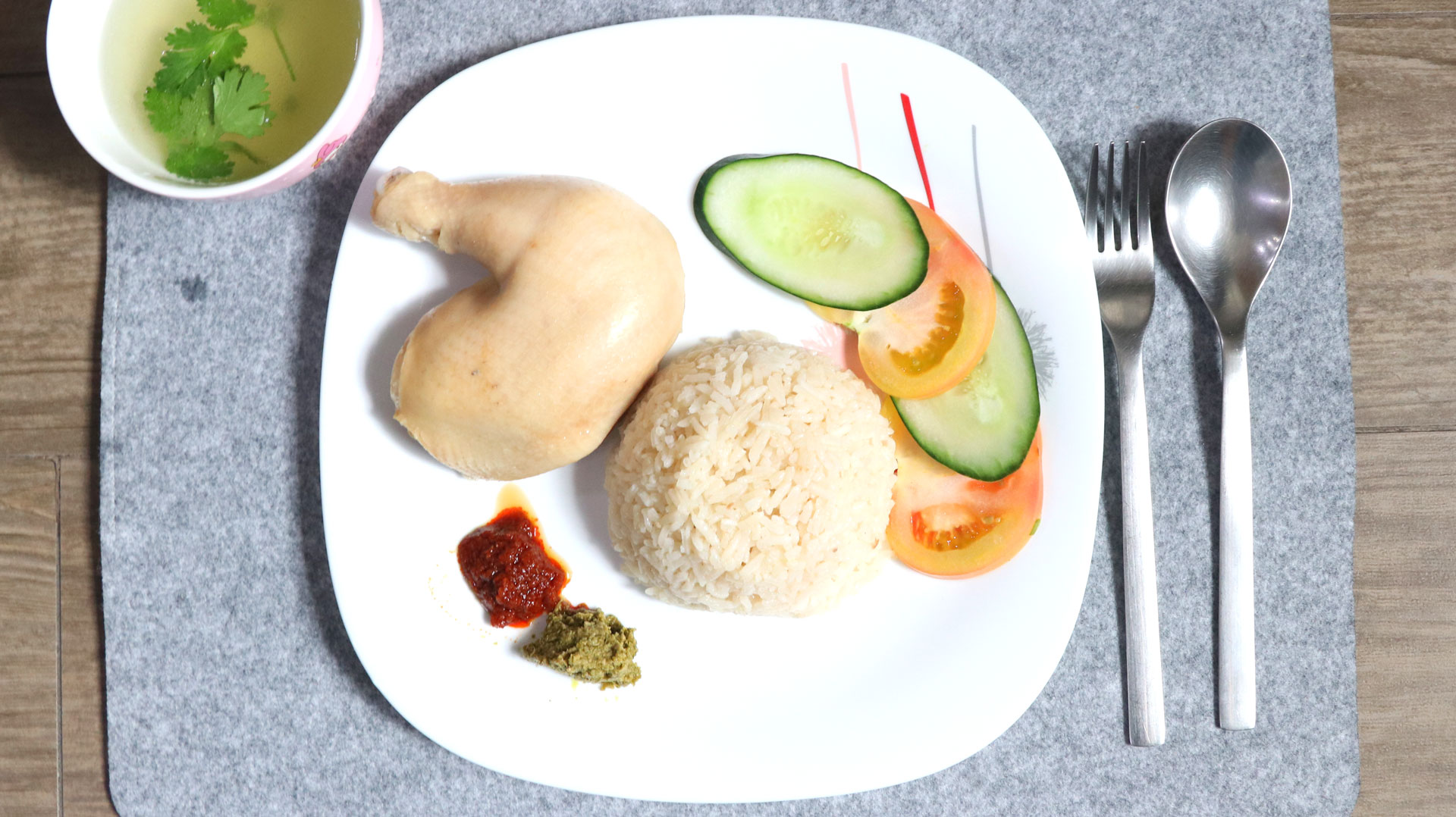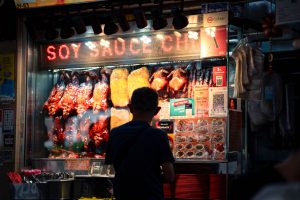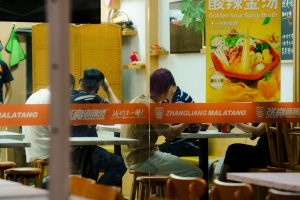Time passes. Years fly by. My parents get salary raises and I get into a so-so secondary school, still untouched by chicken rice, prata, or pig organ soup despite staying within walking distance of 9 hawker centres.
Outwardly, I kept up the same hostile attitude towards Singaporean food that was my modus operandi in Primary school.
Inwardly, however, doubts had started to surface.
Adolescence made me smarter, which was good. But it also made me self-aware and introspective, which was bad because it meant that I could no longer lie to myself with the same child-like conviction. Unfortunately, self-deception was necessary for keeping up this facade of hating local food that I had never tasted.
How could I dismiss bee hoon when I had no memory of ordering it? Who the hell just goes around hating on dishes they’ve never tried?
In short, a teenage me finally recognised the fraud staring back at him in the mirror. Even though I did not understand the psychological reasons for my refusal to eat laksa, I was at least smart enough to realise how stupid I was.
Being the world’s harshest critic of fish soup who had never tasted fish soup was clearly a ridiculous role, and I was sick of playing the fool.
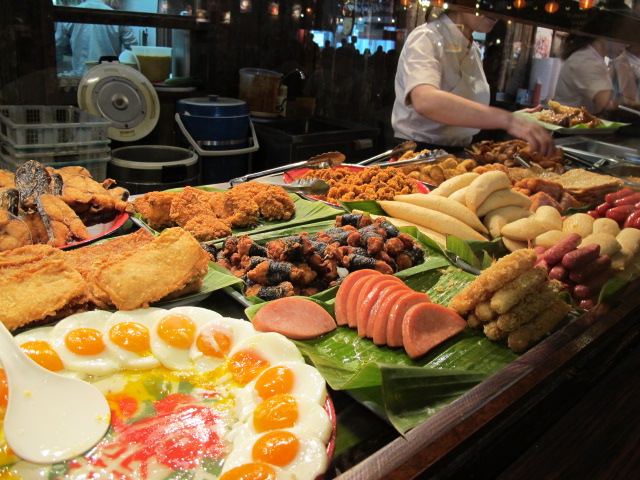
Filled with a newfound determination to assimilate, every atom of my teenage self readied itself for a dive into the infinite glories of hawker food. So I steeled myself for a Damascus moment, walked to the kopitiam barely 2 minutes from my house, stared blankly at the chicken rice stall for ten minutes, and walked back empty-handed.
Why? The problem was too much self-awareness, a double-edged sword which makes you wiser but also more awkward. Standing in line for the chicken rice, I grew keenly aware that my culinary choices (or lack thereof) made me a freak amongst the well-adjusted citizens around, every one of whom knew how to order wanton mee without embarrassing themselves in public.
I, on the other hand, had not the slightest clue how to navigate the organised chaos of a hawker centre. At 15 years old, I had taken the pledge and become a Singaporean citizen, but the kopitiam remained a foreign country whose language I did not speak.
Thanks to racial harmony day, I was aware that chicken rice is a ‘must-try’ dish, but the textbook failed to supply the words for ‘roasted’ or ‘white’. Char kway teow also seemed delicious but I didn’t dare to order it because I thought it worked like yong tau foo, where you had to specify which ingredients you wanted.
Worst of all was the cai png stall, which I did not stray within 10m of. For half a lifetime, I labored under the delusion that all true-blue Singaporeans knew the exact names for every type of ‘liao’ on offer.
Sadly, no stall ever bothers with a menu or signboard so I resigned myself to a lifetime without economical rice, totally unaware that nearly everyone got by with just their index fingers and a three-word vocabulary of ‘meat’, ‘veg’ and ‘fish’.
So instead of liberation, my attempts to learn more about hawker food merely revealed the scope of my ignorance. As a result, my fake hatred of Singaporean food turned into a near-constant fear of exposure. I would stand in line at the stall, then lose heart and flee the scene, feigning some personal emergency that required immediate attention.
In my head, the same horror story played in a loop: I imagined the auntie asking me whether I wanted XYZ with my noodles, and unable to comprehend, I would stand frozen, holding up an impatient queue. They would grow angry, then incredulous as they learn the reasons for their delay – a stupid boy who didn’t know what ‘hum’ was. At the end of this fantasy, there would be gales of mocking laughter, a New Paper headline entitled, ‘PRC Boy Doesn’t Know How to Order Laksa’, and a long exile to compound my shame.
This sounds hysterical and melodramatic, and it was. But my fear was genuine. In the mid-2000s, anti-Pinoy sentiment had yet to become en vogue and PRCs were still the main punching bags.
In such a terse atmosphere of judgment, I believe that almost every child of PRC parents worked hard to conceal the circumstances of their birth from scrutiny. In this regard, I was no different. Having worked hard to scrub the ‘cheena’ traces from my accent (and identity), the last thing I needed was any association with ‘foreigners’.
Torn between the irrational fear of being outed as a PRC and my curiosity towards local food, I picked the former and continued lying.
To give myself some credit, I also became a masterful storyteller who weaved elaborate fairy tales to answer that most dreaded query: ‘Are you joining us for food?’
Fearing ridicule, I would give a range of excuses at my own expense. Every day, I either didn’t want to because of a ‘heavy breakfast’ or couldn’t go because I had ‘unfinished homework’. After school, I would disappear because my mom ‘cooked already’ and anyway, I hated ‘long queues’, which I added to my list of things to fake-despise.
When pressed, I would fall back to a watered-down version of the original – ‘Of course, I’ve tried ice kachang, I just don’t care for it. You guys go ahead.’
Once I had parted ways with my peers, I would make a beeline for the nearest 7-eleven and gorge myself on chips and Mars bars.
This charade went on until the day when it suddenly and unexpectedly ended. I can’t tell you the exact month, or date, but it happened around the last days of secondary school, when ‘O’ levels loomed like a Kaiju on the horizon.
Like every shitty shounen manga, it all came down to the power of friendship.
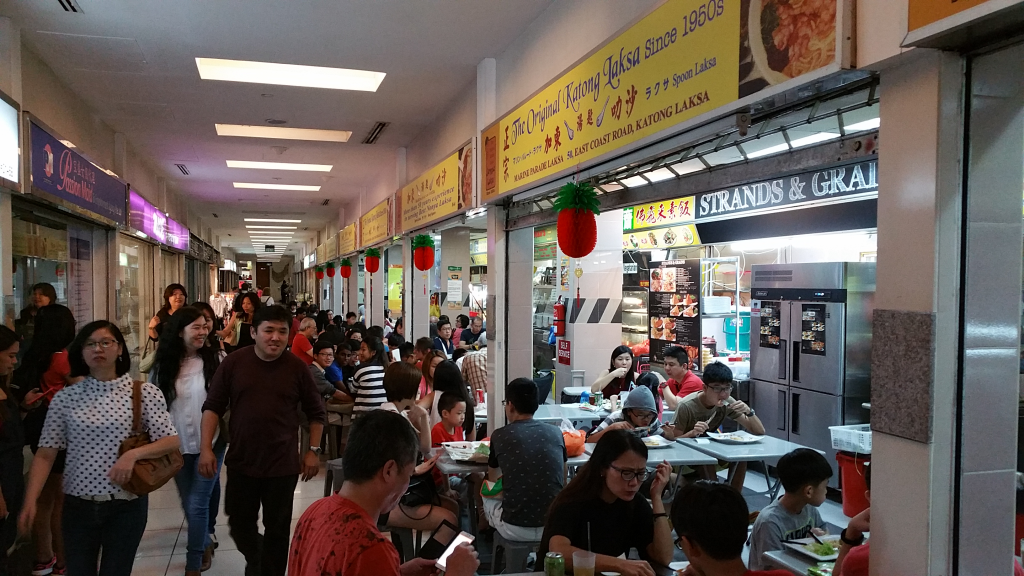
As the exams drew close, my friends and I entered a manic cycle of revision, slacking-off, guilt, and then more revision. School no longer ended at 2 because of extra cram sessions for trigonometry or the formation of Oxbow lakes, which always held us back till dusk. On weekends, we would meet in school with the intent of ‘revising together’, only to waste the entire afternoon alternately goofing off and stressing out until OMG IT’S FIVE PM AND WE ONLY DID 2 CHAPTERS.
However, despair does breed solidarity. As a result, we spent a lot of time in each other’s company. Staying so late also meant that the school canteen was closed, thus forcing us to venture out in search of sustenance.
It was on these anxious, gloomy excursions that I got my first taste of Singaporean food.
To say that it was an eye-opening experience would be an understatement. In a way, it was probably a greater education than the ‘O’ level examination itself. Watching my friend order his chicken rice was like turning on the subtitles to a foreign-language movie, and the mysterious motions that I had only witnessed from afar suddenly made perfect sense.
I learned that you had a choice between ‘thigh’ and ‘breast’ meat. I learnt what those brown eggs (a.k.a lu dan) were called. I knew what to do with the chilli sauce, the necessity of trays, the option of drizzling dark soy sauce all over your rice, and a thousand other details that had never occurred to my uninitiated brain. I didn’t even realize that you could have extra rice if so desired.
Needless to say, I ate everything on the plate, cucumbers and all.
In retrospect, the chicken rice was awful. The chicken was 60% bone and the rice came garnished with random insects. If asked to eat at the same stall today, I would probably flip a table and suggest somewhere better. But in the excitement of it being a first encounter, everything was beautiful and nothing hurt.
I loved all of it – from the fragrant oily rice to the acid chilli sauce which tasted nothing like China’s oily bean curd chillies.
You know that scene in The Matrix when Neo discovers there is no spoon? Yeah, that’s what it felt like – a semi-religious epiphany.
It was hard to keep a straight face whilst losing my chicken rice virginity, but I managed it admirably. In the days to come, I even half-goaded, half-Jedi-mindtricked my friends into going out for more hawker food. There, they would have lunch and I would have my mind blown by the fact that prata came with free curry (!), and ‘hum’ was not a sex act – just a delicious helping of warm, juicy cockles.
A few weeks after the exams concluded, I skipped dinner and went to eat by myself at the hawker centre. The wet market behind my house was just as hot and crowded as when I first arrived in 1997, but it didn’t bother me very much anymore. The noise, the humidity and the once fearsome aunties were familiar discomforts.
And the food? It tasted fine.
These days, I like a bit more egg in my hokkien mee. But at 16, it tasted like progress.

